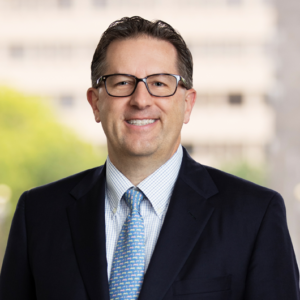The Department of Health and Human Services Office of Inspector General (“OIG”) recently issued Advisory Opinion 16-10, which approved an arrangement between two health care districts to coordinate the education and transportation of patients with financial need (“Proposed Arrangement”). OIG stated that it would not impose sanctions against the parties for violations of the Anti-Kickback Statute (“AKS”) or the Civil Monetary Penalties law (“CMP”) because the arrangement promotes access to care and poses a low risk of harm to federal health care programs.
Background
Requestor (“District A”) is a public health care district formed under state law. Under Requestor’s state law, health care districts have the power to “establish, maintain, and operate, or provide assistance in the operation of, one or more health facilities or health services … at any location within or without the district for the benefit of the district and the people served by the district.” District A owns and operates a hospital and two clinics, one of which is located in a nearby health care district (“District B”). District B does not own or operate any health care facilities. Both District A and District B are located in underserved areas and/or health professional shortage areas.
Both District A and District B desire to establish a transportation program for patients who receive health care services at the clinic located in District B. District A would like to hire an individual to form a database of the transportation services available, the costs associated with those transportation services and any available programs that may offset transportation costs. District A would pay for necessary equipment and supplies needed by the transportation coordinator. District B intends to pay for costs associated with the space and utilities needed for the transportation coordinator.
District A asserted that the Proposed Arrangement would not be advertised and would only be offered to the patients of the clinic located in District B who require follow-up care at the hospital. The staff of the clinic located in District B would help patients complete needs assessment forms prior to determining eligibility for transportation programs. The proposed services provided to patients may include travel instruction programs to train patients on the local transportation system and subsidies of transportation costs for patients with financial need. Requests for financial assistance would be approved or denied based upon a predetermined financial assistance matrix. Transportation fee subsidies would range from $0.50 to $2.50 per trip. District A and District B would split the cost of the subsidies for patients who reside in District B. In the event non-District B residents qualified for transportation assistance, District A would fully fund those subsidies.
OIG Analysis
Remuneration Between District A and District B
The AKS makes it a criminal offense to knowingly and willfully offer or receive remuneration in an effort to induce or reward referrals of items or services reimbursable by federal health care programs.
In conducting its analysis, OIG concluded that remuneration flows between District A and District B. Further, District B could be a potential referral source for District A (though District A is not a referral source for District B). Because the patients of the clinic in District B are residents of District B but are also patients of District A, there is a lower risk associated with District A contributing funds that benefit District B’s residents. The remuneration passed pursuant to the Proposed Arrangement is tied to the transportation of District A’s patients between the clinic in District B and the hospital. Because District A and District B are public agencies whose missions are to provide health care directly and to provide assistance in operating facilities and services, the risk is low that the remuneration between the two Districts would be for the purpose of inducing or rewarding referrals from District B to District A.
Remuneration to Patients
The CMP provides for penalties against anyone who offers or transfers remuneration to a Medicare or Medicaid beneficiary that the provider knows or should know is likely to influence the beneficiary’s selection of a provider of any item or service that will be paid, in whole or in part, by Medicare or Medicaid.
The Affordable Care Act (“ACA”) amended the CMP definition of “remuneration” to allow new exceptions for certain beneficiary inducements. Specifically, the ACA amendments exclude from the definition any remuneration that promotes access to care and poses a low risk of harm to patients and federal health care programs. Although OIG issued proposed regulations in 2014 that would help to define the types of items and services that promote access to care and pose a low risk of harm, this proposed rule has yet to be finalized. As such, OIG’s analysis of the Proposed Arrangement did not go into detail regarding the Proposed Arrangement’s ability to satisfy this CMP exception to the definition of remuneration.
OIG determined that the transportation coordinator’s education services provided to the patients would not constitute remuneration under the CMP. However, subsidies for public transportation for patients of the clinic in District B would be remuneration under both the AKS and CMP.
OIG analyzed the various risk factors of the Proposed Arrangement and determined that it presented a minimal risk of fraud and abuse based on the facts and circumstances.
- District A and District B are public entities whose subsidies would help residents access health care services;
- The proposed subsidies are modest, would only be available to patients with financial need and would only be used for certain types of transportation operated by the county;
- The Proposed Arrangement would not be advertised, marketed or targeted to certain patient populations or beneficiaries; and
- Financial need criteria would be set forth in a matrix and based on a percentage of the federal poverty guidelines.
Practical Takeaways
Health care providers and entities that currently offer transportation services, or those that desire to offer such services in the future, should carefully consider any services provided to Medicare or Medicaid beneficiaries in order to ensure that these incentives do not violate the AKS or CMP.
In order to minimize any risk associated with a transportation program, providers should:
- Ensure that any transportation education or subsidies are intended to promote patient access to necessary health care services;
- Consider only providing subsidies to individuals that satisfy predetermined financial need criteria; and
- Ensure that opportunities for education and subsidies are not advertised to the community at large and are only discussed with the provider’s existing patients.
If you have any questions or would like additional information about this topic, please contact:
- Gregg M. Wallander at (317) 977-1431 or gwally@wp.hallrender.com;
- Erin M. Drummy at (317) 977-1470 or edrummy@wp.hallrender.com;
- Alyssa C. James at (317) 429-3640 or ajames@wp.hallrender.com;
- Allison P. Emhardt at (317) 429-3649 or aemhardt@wp.hallrender.com; or
- Your regular Hall Render attorney.
Please visit the Hall Render Blog at http://blogs.hallrender.com/ or click here to sign up to receive Hall Render alerts on topics related to health care law.



